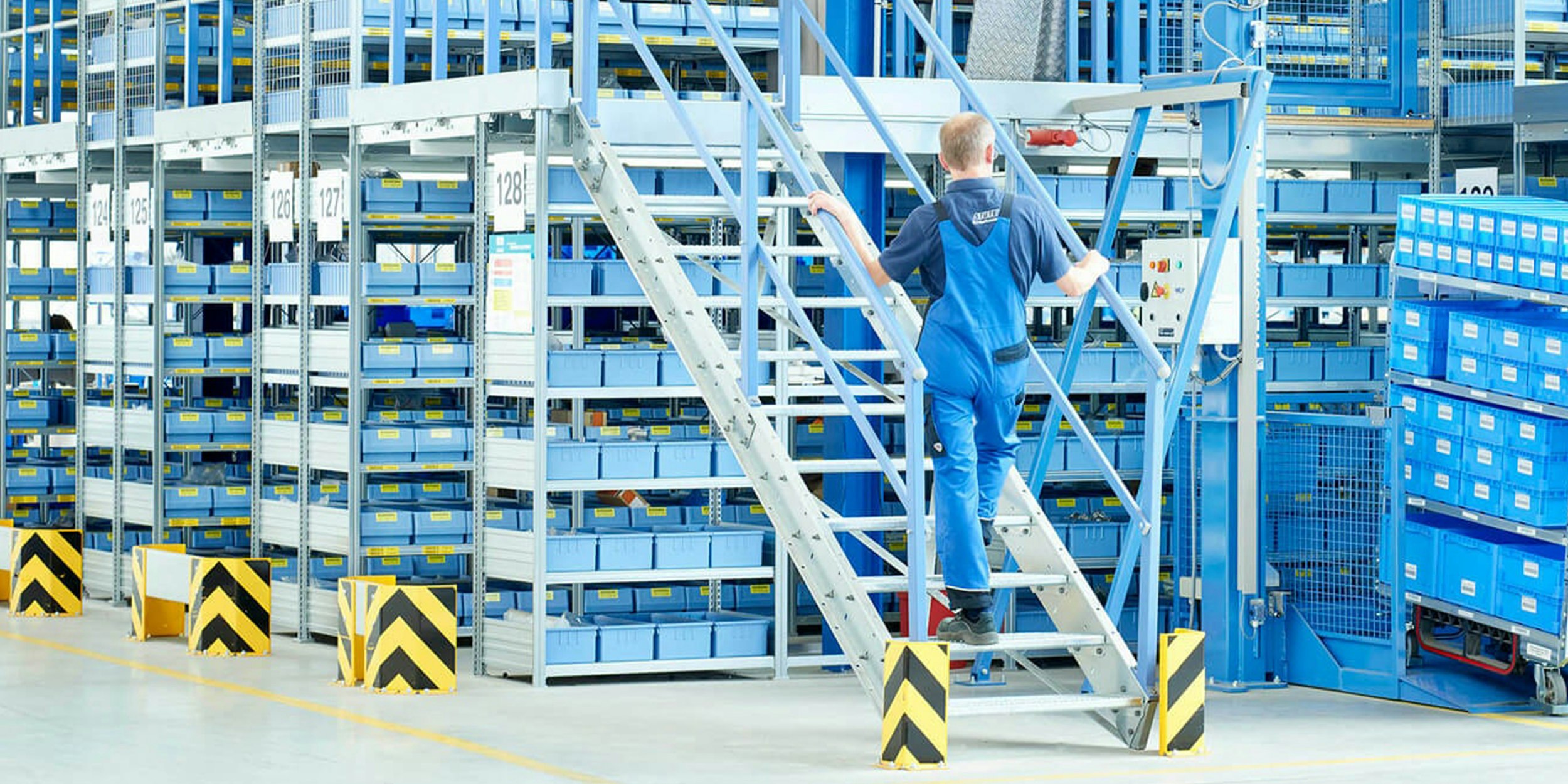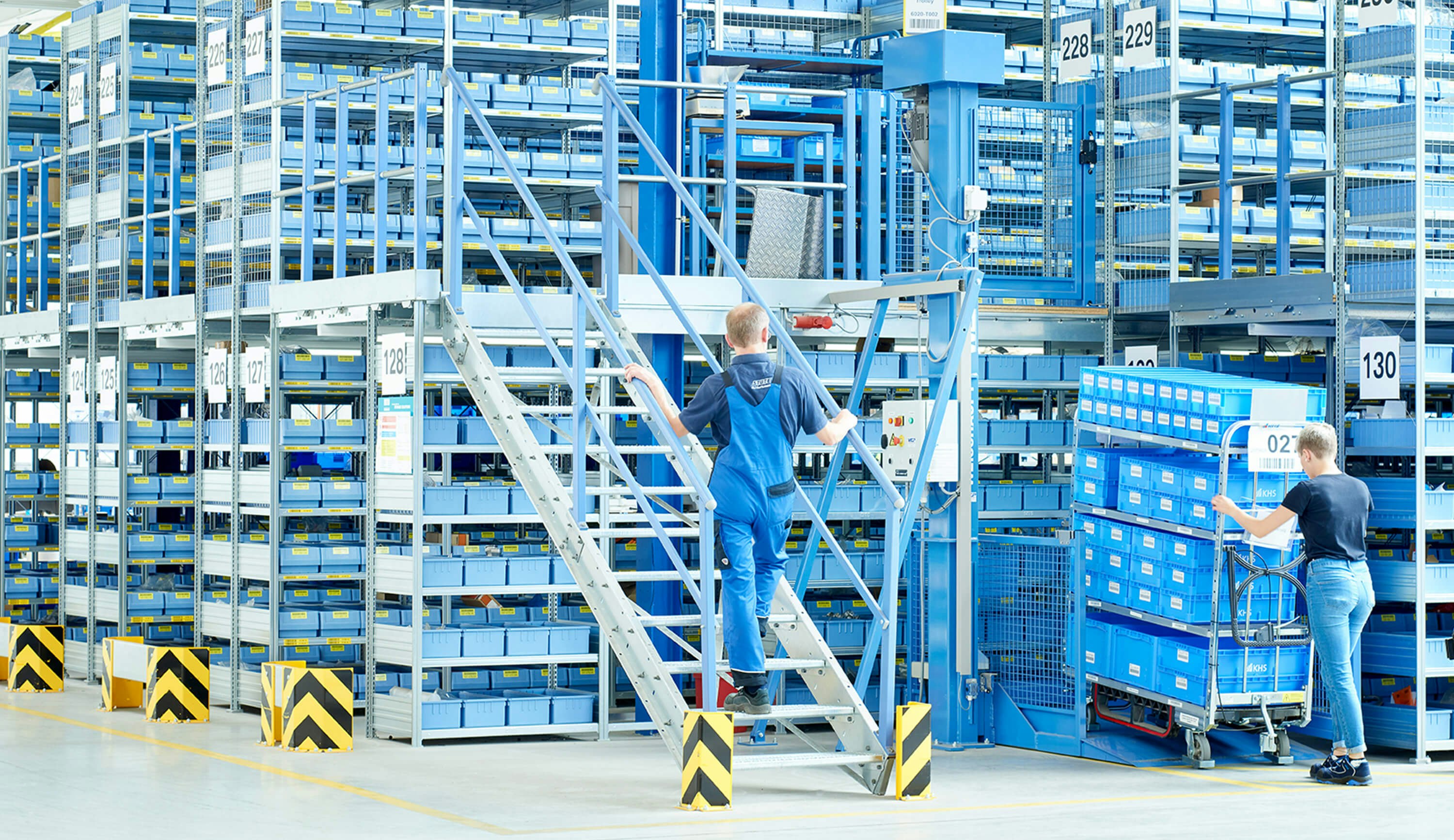Warehouse modernisation: into the future via retrofitting

Many logistics operations, warehouses and the associated technologies are getting on in years. Not only does warehouse technology wear out, it naturally becomes outdated and can no longer keep up with corresponding modern requirements, such as handling faster order picking speeds. Often, people wait too long before retrofitting for reasons of convenience or cost. However, the availability of the warehouse itself, or the technology within it, will inevitably decrease over time due to failures, and the costs of the systems will increase disproportionately. One should therefore think about planning modernisation in good time – ie, before the system or individual components reach their service life expiry.
What is retrofitting?
As a rule, the business environment for a company will change over time. Changing markets, products and customer requirements ensure that an original system set-up will become outdated after a few years. Modernisation offers the opportunity to adapt the intralogistics systems to the new requirements and to make them more efficient and reliable. This usually means that the basic structure of a warehouse remains the same (storage zones, layout, conveyor and storage systems), but by modernising the individual components, new organisational processes, increased performance and improved system availability can be achieved.
A retrofit is therefore the refurbishment and modernisation of old, mainly automated (intralogistics and logistics) systems. Many of the electronic mechanical components of such a system will have reached the end of their service life but what if the production of control units is discontinued by the manufacturer and spare parts are no longer available? There is therefore a risk that systems can no longer be maintained and will fail permanently. It is often the case that the dynamic, control and information technology systems reach the end of their life, while mechanical or static components and the steel structure have yet to.
What areas does retrofitting cover?
Modernisation can cover the entire warehouse or it may be applied only to individual areas. Companies most often modernise processes in order picking (the introduction of voice picking for example), goods storage and retrieval as well as IT or software. In addition, goods tracking, co-ordination and cross-docking are subjected to retrofitting. Facilities, components and processes must be modernised according to current requirements for safety and optimal productivity. Sometimes the modernisation of a warehouse can avoid the need to construct a new building or an expensive extention of an existing facility. In such modernisations, the focus is often on the control hardware, drive systems and sensor technology or the software, such as the control system of a storage and retrieval unit.
What questions should companies ask themselves?
Important questions to ask include:
Is my warehouse or warehouse technology still performing as it should in terms of turnover rate, warehouse utilisation, storage costs, productivity, etc.?
One of the most important key figures for evaluating performance is productivity. It describes the ratio of performance to the achieved effect – e.g, the ratio of the hours worked to the number of items picked. This will inform on the performance of both the picker and the picking system.
Do warehouse processes still meet today's requirements for speed, omnichannel logistics, e-commerce and small order sizes? Due to the rapid development in e-commerce, the demands on picking processes and warehouses, for example, are constantly growing.
This also raises the question of whether the Warehouse Management System, the organisation of a warehouse and other software remain ‘state-of-the-art’.
Are all spare parts for warehouse technology still available, for example for conveyor technology, stacker cranes, industrial trucks, etc., or do they need to be modernised? How high are maintenance and repair costs? Are the costs for the procurement of parts and maintenance/repair still within limits?
Does the use of Automated Guided Vehicles (AGVs) make sense?
A new warehouse for little money?
Of course, modernisation does not result in a new warehouse, but it will bring it up to date and extend its service life. The project will involve investment, a detailed concept and preliminary planning. The new components have to be coordinated with the existing ones. It is also important to ensure that existing components are not overloaded by the performance of the new ones, which might cause them to fail.
Advantages and disadvantages of a retrofit
The advantages of retrofitting include lower planning and implementation costs compared to a new purchase or new construction. The risk or probability of failure is also reduced compared to a completely new installation of a warehouse. Modernisation is resource-friendly and employees can continue to work in in the existing facility for as long as possible.
However, some old components will remain in the system and may also fail more frequently in the future. Another disadvantage is that it may not be possible to fully adapt to any further changes in the general conditions.
Retrofitting a warehouse is a task that needs to be considered in detail and planned for the longer term. The implementation of the measures during ongoing operation must also be planned in detail so that warehouse operations are not disturbed or even interrupted.


